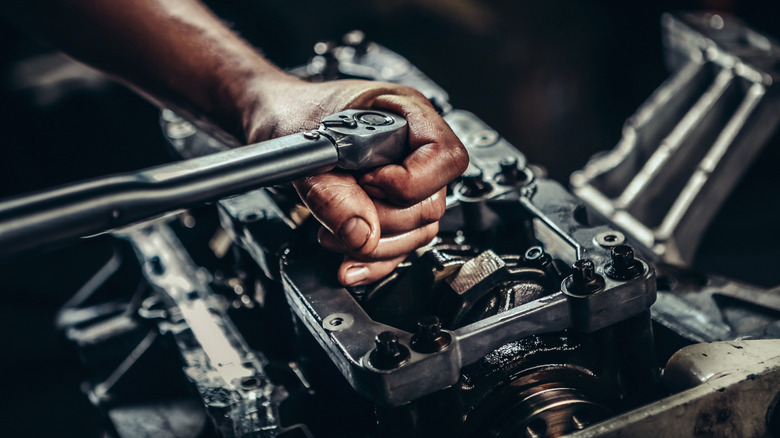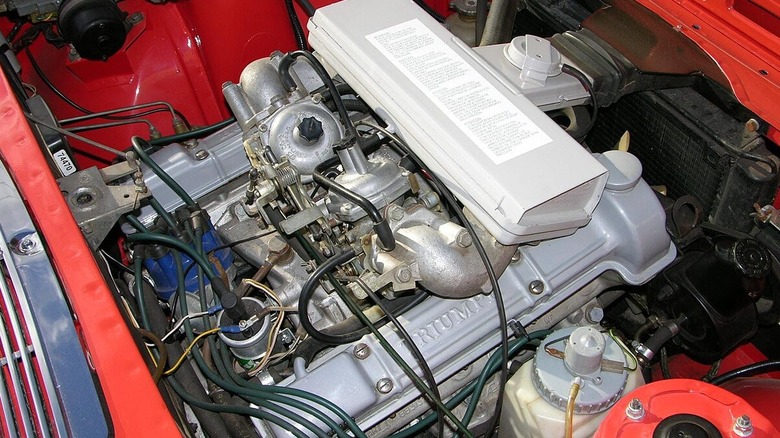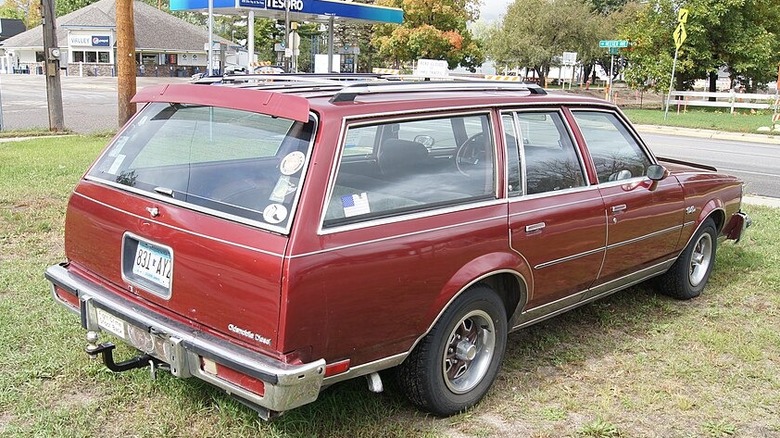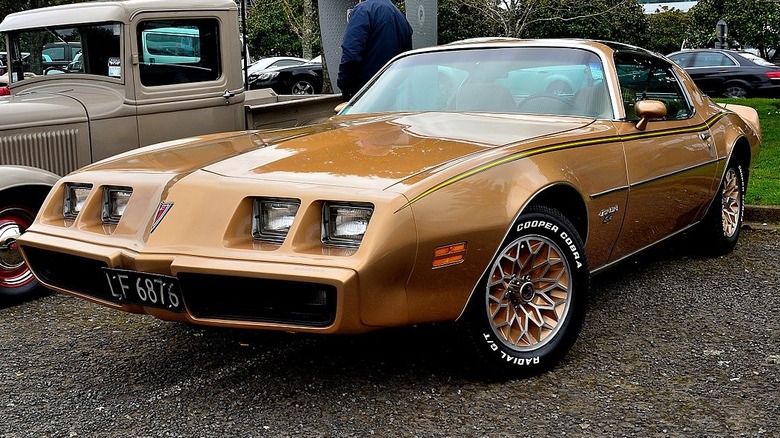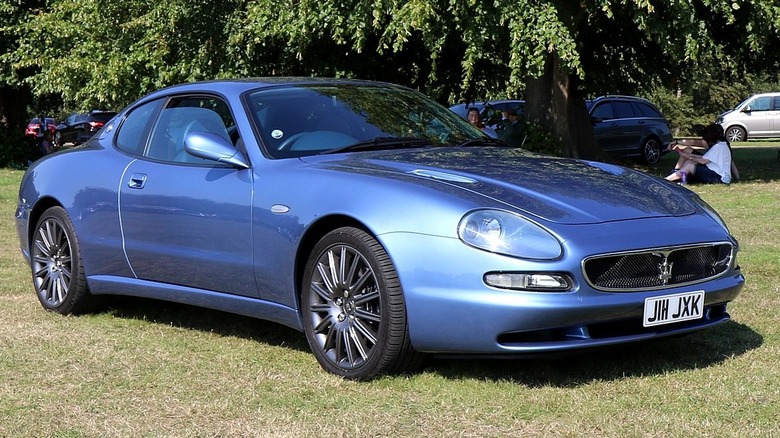5 Of The Worst V8 Engines In Automotive History
The V8 engine is a French invention. Popularized and mythologized in American form, it was patented by French engineer Leon Levavasseur, but the symmetry of eight cylinders pumping in concert appealed to many as a steady and reliable source of power.
The V8 hit the ground running and became popular under the hood of Ford and Cadillac vehicles, and it never really died. Even in these heady days of battery-powered motors and small-displacement turbocharged Ecoboost engines, high-end brands opt for twin-turbo V8 engines when it comes to delivering maximum power for as much of the time as possible.
Some of the best engines made by major automakers are V8s, and nearly every builder has developed a major V8 program. Most have multiple, with some going into history as the finest power plants devised in the industrial age, while others washed away in the slipstream. These are some of the V8 engines that once represented the hopes of a company, and let those hopes down.
Triumph Stag 2.5L
By the mid-1960s, the bigger-is-better displacement wars were on the verge of exploding. The Clean Air Act of 1970 was years away. The 1964 Pontiac Tempest GTO and Ford Mustang ignited the pony powder keg. Carroll Shelby was shoehorning Ford V8s into British-built AC Cars. British road racing had a long history, and the open roads of America encourage throaty V8 power. The Triumph Stag, making its debut in 1970, was a sight to behold. It was designed to blend in with the Aston Martins and Jaguars of the era, and at first glance, it did just that. With its elegant British tourer design and sleek lines, it was a few years behind the XKE or DB-5, but it was a Triumph, not a Rolls-Royce. Breaking new ground wasn't its job.
Triumph wasn't the only manufacturer to take a stab at V8s in British bodies, but where the Stag went wrong was directly under the bonnet, as it were. Engineers figured that melding two of Triumph's existing four-cylinder engines into a 2.5-liter V8 ought to do the trick. To meet the American market's standards for clean burning, it needed to abandon its planned Bosch fuel injectors in favor of carburetors. More problems followed.
By the time the Stag hit the market in 1970, it looked good and ran terribly. Poor build quality put the final nail in the British V8 roadster's coffin, leaving the 2.5-liter V8 in the Stag among the poorest V8 engines of all time.
Chevrolet 305
The Chevrolet 305 V8 engine almost made it. Naming an engine as mass-produced as a Chevy 305 the worst is like naming the Supermarine Spitfire Mk 1 the worst Spitfire. The point is that the 305 has enormous upside. What brings it to this list is how much it wastes.
Alongside the Ford 302 V8, the Chevy 305 was a popular choice for hot rodders. On paper, it works wonderfully. It was a Chevrolet V8 designed and developed in 1976, the height of the Malaise Era, on the heels of some of the greatest Chevrolet engines in history; but this is not one of them. Its Ford 302 competitor had roots back in 1969 as a race engine. The Chevy 305 was a detuned and weaker version of its older sibling, the 350 V8. Detuned for Camaro duty during the 1980s, the LG4 305 cubic-inch engine produced 155 horsepower at its maximum. The L69 made 190 horsepower, and the fuel-injected LB9 topped the charts at 215 horsepower.
The 305 V8 served in work vans and station wagons while also being featured in sports cars in the 1980s and appearing in various projects, sometimes in a righteously modified form. However, despite the Chevy 305 often drawing comparisons to Ford's 302, it's a heavy, underpowered, and underwhelming American V8 engine.
Oldsmobile LF9
Oil supply issues had American manufacturers accustomed to cheap and plentiful gasoline reaching anywhere and everywhere for efficiency. That included streamlining recently popular V8s with diesel technology. Not all V8 engines are meant to be in the same conversation as race-ready units. As the 1970s gave way to the 1980s, Oldsmobile instituted an eight-year run of the 350 cubic inch LF9 Diesel V8.
The LF9 was the only diesel V8 developed specifically for passenger vehicle usage at the time. It had an iron block and heavy main-bearing sections. It utilized an iron crankshaft from a 455 cubic-inch gas engine and shared manufacturing with existing engines. And it was an absolute dog.
Oldsmobile built the LF9 between 1977 and 1985. It went under the hood of vehicles across the General Motors family, including those of Cadillac. It produced all of 120 horsepower until 1981, when it was reduced to 105 horsepower. According to Hemmings, a GM B-body powered by the LF9 rattled to a 16-second quarter-mile time. But you don't need a 10-second car to pick the kids up from a 1980s high school, and that's what the LF9 was for.
Pontiac 301 Turbo
Pontiac was in the same boat as all previously thriving muscle marques. By the late 1980s, it featured large engines, such as the 400 cubic-inch V8. Like Oldsmobile, Pontiac turned away from the typical. Instead of developing a diesel, Pontiac turned on the turbo.
Turbocharging had been around for a long time by then, but in the auto world, it was primarily relegated to specialty European sports cars. An established method to improve efficiency without sacrificing as much power, some of the most reliable engines with turbochargers have had excellent careers. The Pontiac 301 Turbo was not one of them.
Today, small turbo V8s are in some of the most powerful and luxurious cars in the world. The 1981 Firebird was not that. On paper, it looked cool: A 301 cubic inch V8 with a turbo! There will be turbo lag and all of that, but have you seen the price at the pumps? In the end, the 301 Turbo delivered 210 horsepower against the 400's 220 horsepower, but it would not go down in history as the revolution Pontiac hoped for.
Maserati AM585 3.2L
We'll lay off the Malaise Era of America for the moment and turn our attention to another usual suspect: overengineered Italian V8s. Maserati hangs around the fringes of the Italian performance game, scoring hits in North America from time to time. Maserati's merits include a head-turning design and an exotic European pedigree, which often includes complex powerplants. Maserati's twin-turbo AM585 3.2L is most famous for serving up around 365 to 400 horsepower in the 3200 GT, Shamal and Quattroporte IV.
Sourced from Ferrari's 3.8-liter V8, the AM585 is not just a fun and exotic engine, it's a symphony waiting to be heard. When in tune, it sings beautifully, with a unique sound that sets it apart. However, it's also a high-maintenance diva that must be firing on all cylinders to perform — literally. And if that engine breaks down, it's difficult and expensive to repair.
The AM585 served for a decade, much to the joy of Maserati tech and shop owners everywhere. The AM585 may be no more, but it left a lasting impression. It emerged as a finicky yet impressive 572-horsepower Italian twin-turbo V8, a powerhouse that could sing an aria, if you could afford it.
